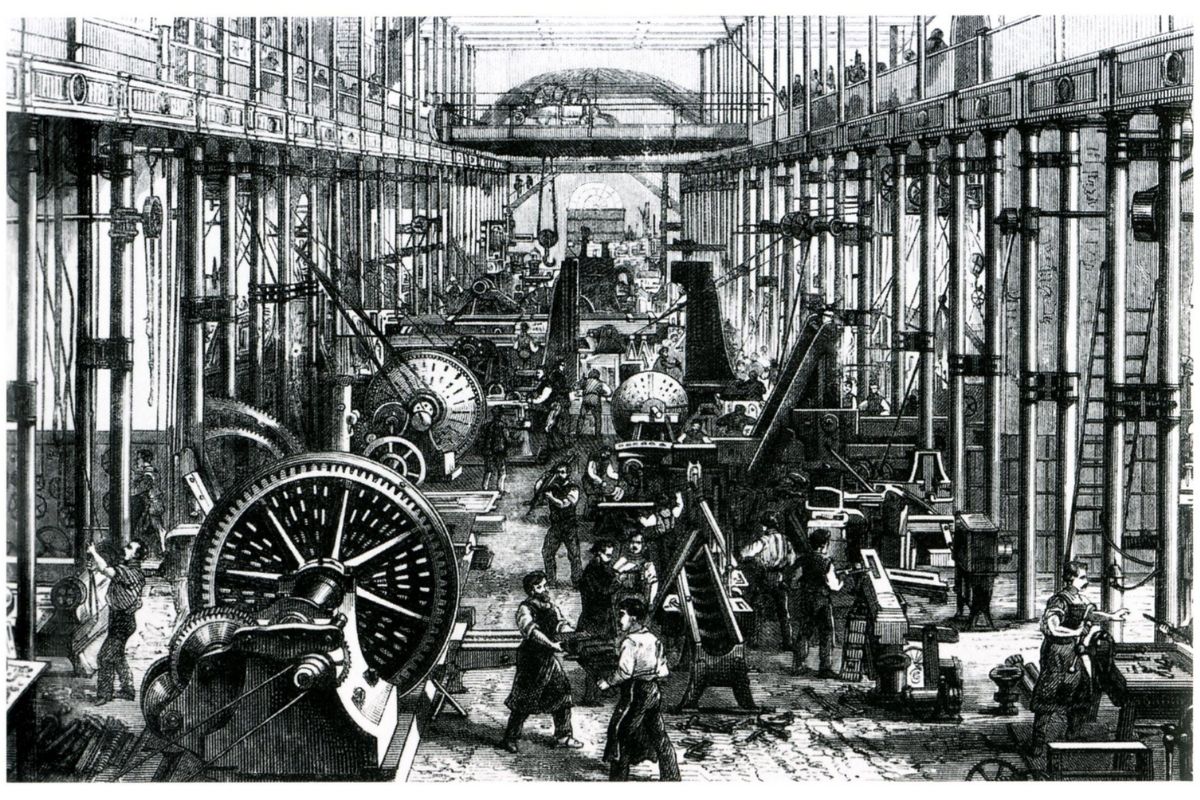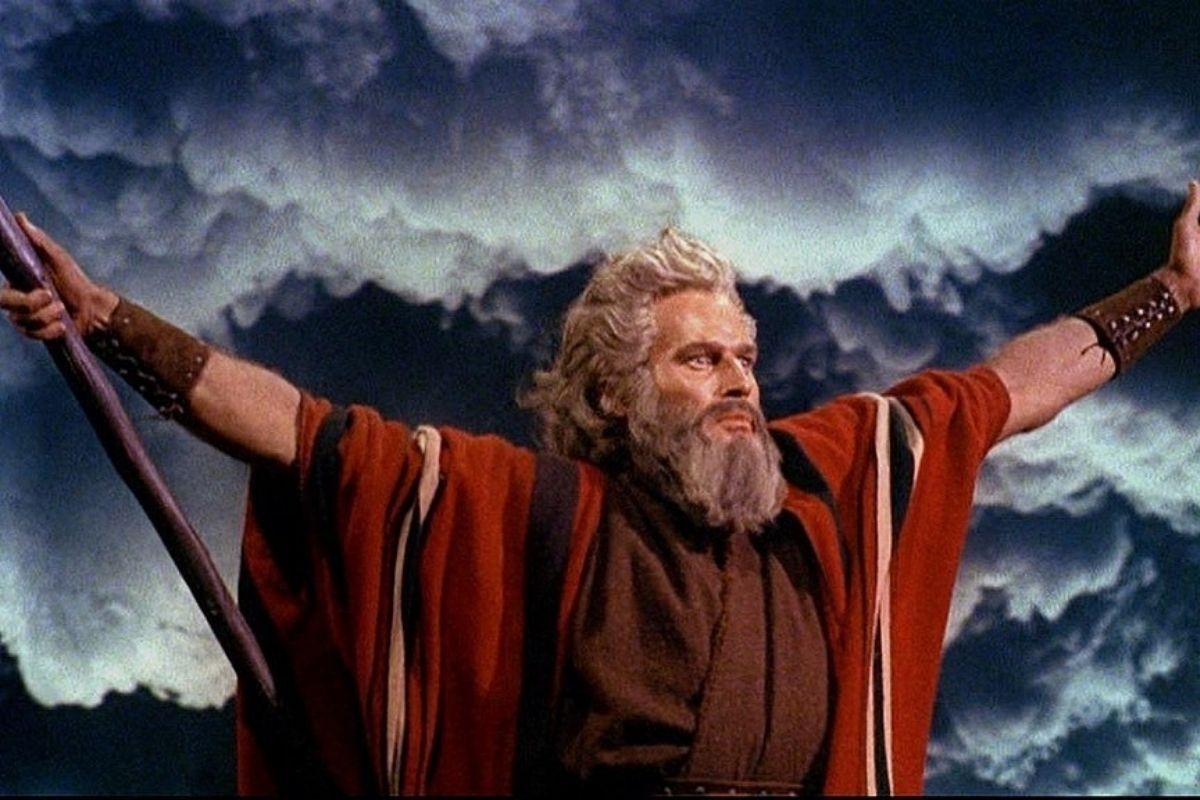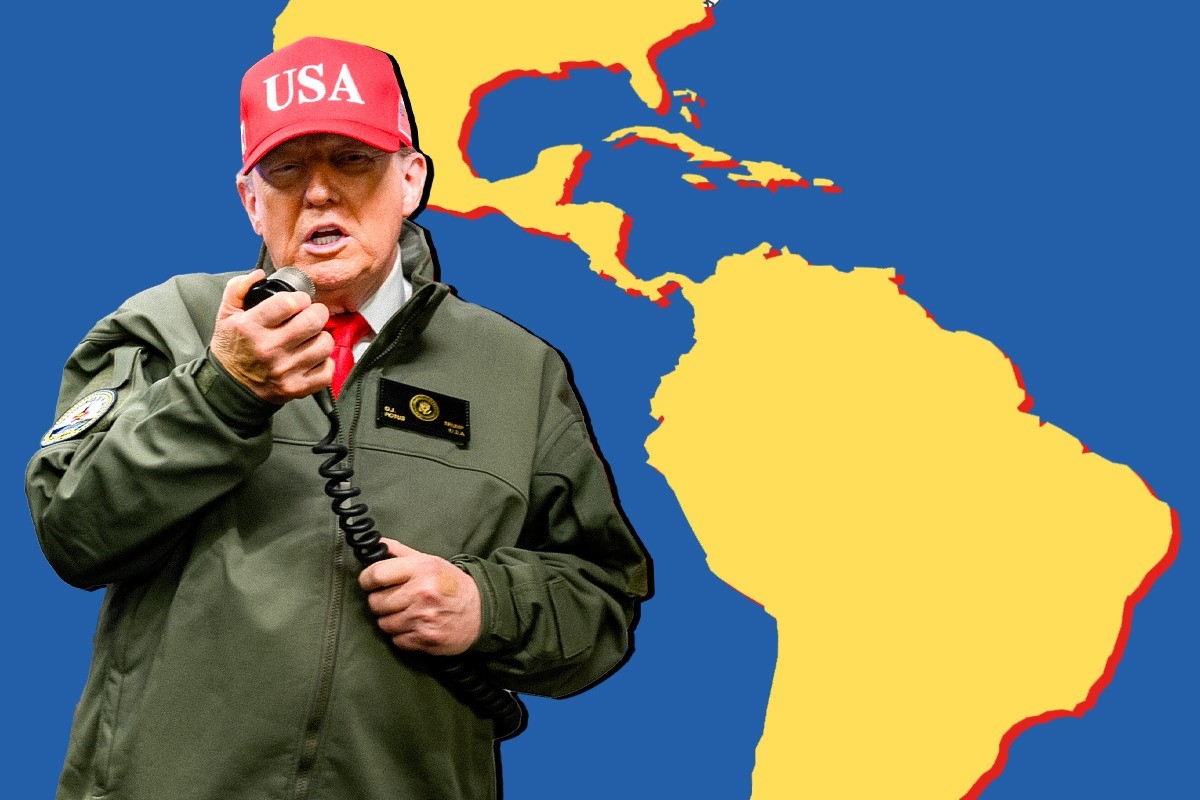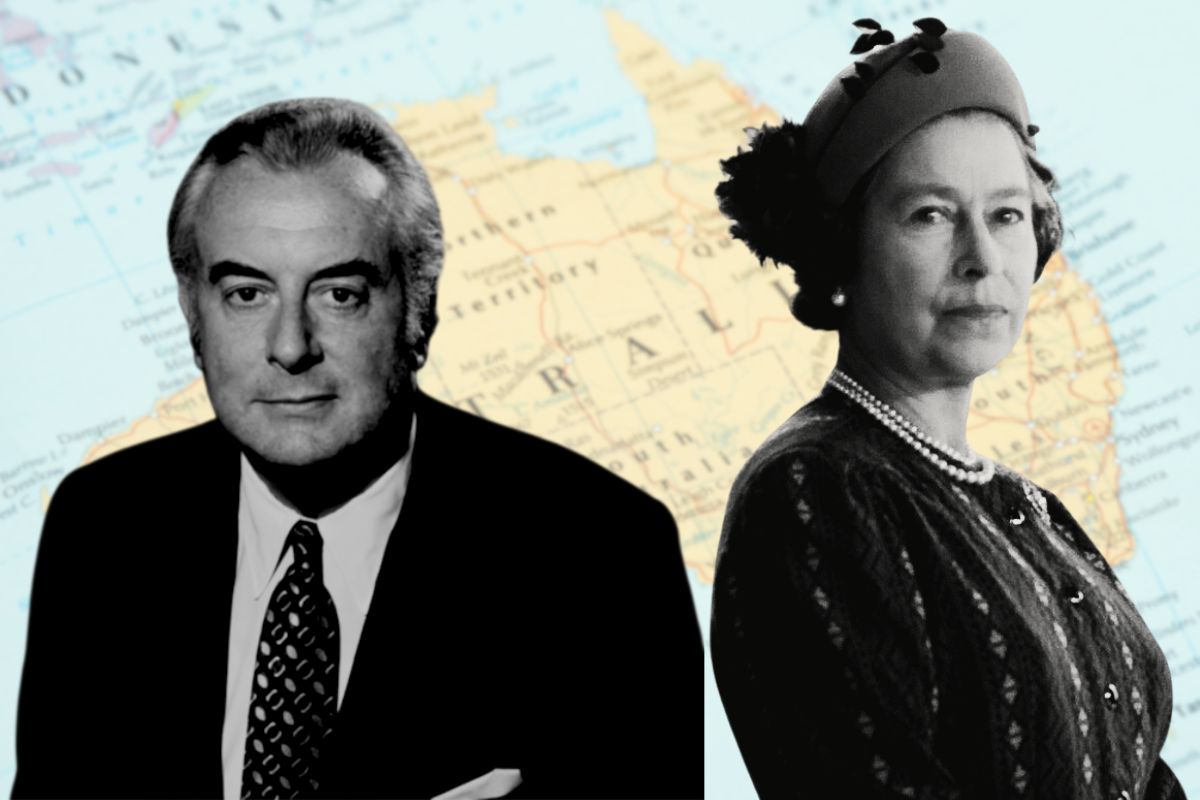As the new year begins, Alan Woods, editor of In Defence of Marxism, looks at what lies ahead, as economic crisis, environmental catastrophe, war, and disease continue to plague humanity. The perspective is clear: socialism or barbarism.
At the dawn of 2022, the cries of “Happy New Year” have an empty ring for most people, because most people are not happy at all. In the past, in troubled times, they looked for consolation in religion. But nowadays, the churches stand empty. Instead, people have tended to take refuge in their local pub, or perhaps in the cinema, which have become something like a modern opium of the people. But given that many of these are closed, many have nowhere else to seek comfort than in their television set.
At this time of year, television companies all over the world regale their viewers with a special treat: the endless repetition of ancient Hollywood blockbusters.
A considerable percentage of these old films have an overtly religious character. In response to the alarming decline in church attendance, evidently the authorities have decided to instil some spiritual element into the end of year celebrations by bringing God into our homes through the modern miracle of the television set.
This miracle is far more remarkable than anything one can read in the Bible, which informs us that God is a mysterious and entirely unseen presence. Although occasionally, very occasionally, he makes himself available to certain privileged individuals, albeit in an indirect (usually spoken) form.
Now, thanks to the wizards of Hollywood, millions of people are ushered into the presence of the Almighty, who evidently bears an uncanny resemblance to Charlton Heston, the well-known actor of religious roles, right-wing Republican, and former president of The National Rifle Association of America.
Now, whatever God Mr. Heston may have believed in, it is certainly not the God of Peace. On 20 May 2000, at the NRA’s 129th convention, the actor held up a Revolutionary War-era flintlock rifle and announced that if the government wanted to confiscate the gun, they’d have to take it from his “cold, dead hands.”
And when he finally went to meet his Maker on the 5 April 2008, at the ripe old age of 84 years, his hands were quite warm enough to hold not only an old musket but also a respectable fortune worth $40 million dollars.
“And God saw the goodly profits to be made from the sale of weapons of destruction, that it was good.
“And God said:
“Peace on Earth, Goodwill to men”
– But not too much, as it is bad for business…
The menace of the Mad Robot

In order to cheer us up after this macabre and endless flood of religiosity, the TV moguls hasten to treat us to an equally infinite series of disaster movies, in which the world is threatened with destruction in one horrible way or another. One recurring theme in these films is that the world will soon be taken over by robots.
The idea that artificial intelligence represents a threat to humans, and that ‘clever’ machines will displace men and women, has replaced the more naïve subjects of ghouls, vampires and Frankenstein’s monsters as a subject for horror movies. But this is not just fantasy – a product of the dark recesses of the human psyche – it has a very real material base.
The spectacular advances of science and technology, far from a blessing, are seen as a curse. These developments ought logically to signify a reduction of the working day, and therefore a future in which slavery will be replaced by increased freedom, enabling the fullest development of people’s potential.
But the reality is very different.
Karl Marx explained long ago that, under capitalism, the introduction of new machinery inevitably leads to a growth in unemployment and longer hours for those who still have jobs. Millions of workers will be faced with losing their employment as a result of automation, and the new technology that will render them redundant.
The problem is that unseen, uncontrollable forces have already taken control of our lives and destinies, which are now facing an existential threat, compared to which all the Terminators, Jaws and Frankensteins pale into insignificance. These unseen forces are the hidden hand of the market.
In the nightmare world of Terminator, ‘things’ (machines, robots) have taken over the world and are enslaving people. But, as a matter of fact, this nightmare of fiction is already a reality.
In our times, people are reduced to the level of things, and things (especially money) are elevated above the level of people, becoming all-powerful forces that dominate our lives and determine our destinies. In the world of capitalist decline, alienation has increased to a degree never before seen in history.
Most people are by now aware that our world is in fact faced with destruction, but not by the likes of Terminators (I, II or III) or by sinister spaceships sent by malign forces from the planet Zog, but by a danger far nearer to home.
Dark clouds hang over humankind. Far from looking to the future with optimism, people are seized with a growing dread for the future of the world.
The irrational fear of a world dominated by dehumanised entities that enslave the human race is misplaced, because these alarming images are really a fair reflection of the world we actually live in.
In fact, we are already living in the world of the Terminator. That terrifying creature is only a distorted reflection in our minds of the reality that surrounds us: an alienated, irrational world, which people cannot understand.
In such a world, rational thought is unfashionable. Reason becomes Unreason. As Lenin once put it, a man on the edge of a cliff does not reason. In such a world, it is better not to think at all. The emptiness of modern bourgeois philosophy reflects this idea perfectly, as in the vacuous platitudes of postmodernism.
Instead of facing up to the real problems, we are invited to go to the movies and worry about being eaten alive by some poor shark that has accidentally strayed too close to a beach where humans are swimming. Or about mad robots seizing power, or unseen forces controlling our lives.
Jaws, or beware of the sharks on land

A common variant of catastrophe movies is that of monster animals that derive great pleasure (and a most useful source of protein) from devouring helpless humans.
A case in point is the well-known film series Jaws, the star of which is a shark of monster proportions and an extraordinary level of intelligence (or low animal cunning, if you prefer) that terrorises the peace-loving human beings whose only desire is to spend a pleasant summer holiday on the beach of Amity Island, off the coast of New England.
In the end, after many terrifying adventures, accompanied by the insistent, sinister beat of the well-known theme – the vicious beast is finally conquered. The surfers are delighted – and the travel agents, hoteliers and local mayor even more so. All’s well that ends well…
Except for the unfortunate shark, of course. As the villain of the piece, he got his just deserts, didn’t he? Or did he? I think it was the poet Coleridge who said that literature was “the willing suspension of disbelief”. And that is certainly true of Hollywood movies. We are invited to leave our critical faculties at the box office and all too often our logical sense is stood on its head.
Let us take the case of Jaws. Do you know how many humans are attacked by sharks each year? According to the official sources, there have been some 441 fatal shark attacks between 1958 and 2019 – which seems a lot, but in fact only averages at around seven deaths per year.
But how many sharks are killed by humans? It turns out that humans are killing up to 100 million sharks every year. That is to say, 11,416 sharks are killed across the globe every single hour. That’s about two to three sharks per second.
All the major fishing countries use destructive fishing practices that are largely responsible for the 70 percent decline in the world shark populations over the past 50 years.
The capitalist system is systematically destroying our planet, poisoning the air we breathe, the food we eat, and the water we drink. It is the insane chase after profits by the giant corporations that is decimating the rainforests of the Amazon, polluting the oceans with plastics and other harmful chemicals. It is threatening whole species with extinction – not only the sharks but the human race itself.
Plague
A few weeks before Christmas, the ruling class was triumphant. The press was full of the good news. Science had triumphed over the wicked COVID-19 virus. Everyone back to normal! Long live the vaccine!
It reminded one of the famous tagline from Jaws II:
“Just when you thought it was safe to go back into the water…”
As Berthold Brecht once said: “He who laughs has not yet heard the bad news”. The newsprint was scarcely dry on the front pages when the headlines had to be changed. Now the analysts are predicting that further millions of people will die from COVID-19 in 2022.
The problem arose when the latest variant of concern, Omicron, first made its unwelcome appearance in South Africa. In just a couple of weeks, it spread to almost every country in the world, rapidly becoming the dominant variant in several, including Britain, Denmark, Norway and parts of southern Africa.
There can be no doubt that Omicron will soon replace Delta, the variant that currently causes most cases globally. The first study based on data on Omicron’s spread in Britain found that each infection tends to produce at least three more.
That is similar to the speed at which COVID was spreading in Europe in the pandemic’s first wave in early 2020, before vaccines were available or countermeasures imposed. The official response of many governments is to allege that although the new strain spreads with alarming rapidity, it is less virulent than Delta and less likely to cause serious illness or death, especially if people are vaccinated.
Be that as it may, this new scenario has serious consequences for the entire world in 2022. The news of the new outbreak immediately provoked sharp falls on the stock markets. It has upset all the previous optimistic calculations and introduced a new level of uncertainty that will have negative repercussions, hindering investment and growth.
Even without this new development, the perspectives for 2022 were bleak, with falling living standards and increased hardship for millions of people on the agenda. Now the perspective will be far worse for most, while all the time the fat cats get even fatter, and the gulf between rich and poor becomes an unbridgeable abyss. That is a finished recipe for an explosion of class struggle everywhere.
The worldwide pandemic has served to expose deep fault lines in society. It has cruelly highlighted all the defects of capitalism, which is organically incapable of waging a serious battle against the plague that is destroying the lives of millions of poor people.
The scientists constantly repeat that the only way to defeat the pandemic is by ensuring that every man, woman and child on the planet is vaccinated. But why is that not being done?
As long as the virus is allowed to exist in the slums of India, or the villages of Africa, so long will it continue to develop new and ever more dangerous mutations that will rapidly spread to every country, as the case of Omicron demonstrates.
The great achievements of modern science and technology have created the material basis for a new world – a world in which poverty, hunger and unemployment will be only a nightmarish dream of the past. It offers a vision of infinite progress for humanity.
Marxists have long argued that the two fundamental barriers to human progress are, on the one hand, private ownership of the means of production (meaning production for private profit, not to meet the needs of humanity); and, on the other hand, that monstrous relic of barbarism, the nation state.
The case for a socialist plan of production and international planning is unanswerable, for the simple reason that viruses do not recognise national borders. Unless and until these obstacles are swept away by revolutionary means, no solution can be found to the most pressing problems of the planet.
The solution is in our hands.
Space – the new frontier

The colossal potential of science and technology was revealed on Christmas Day, when the James Webb telescope left Earth on its mission to explore the remotest areas of the universe.
Webb is the successor to the Hubble telescope. But it will be far more powerful than its predecessor – 100 times more powerful, to be exact. This is important for many reasons, but perhaps the most important of all is the fact that the new observatory will be able to penetrate the farthest reaches of the known universe, and therefore, also, to peer into a very remote past.
This means that it will be able to transmit images of a period when the first stars are said to have ended the darkness that, according to the prevailing theories, enveloped the cosmos shortly after the Big Bang, which was supposed to have occurred 13.8 billion years ago.
The most widely accepted cosmological model, called the inflationary model, was first introduced in the late 1970s in order to explain away the contradictions in earlier versions of the theory. It asserts the universe was born in a gigantic explosion of matter and energy that filled the entire universe in a micro-fraction of a second.
“The inflation idea has been tremendously influential,” notes Robert P. Kirshner, an astrophysicist at Harvard University. “No observation’s been found that proves it wrong.” But, he added, “that does not, of course, mean that it’s right.” (National Geographic News, 25 April 2002)
In fact, many serious problems with this theory still remain, not least the fact that it contradicts one of the most fundamental laws of physics: namely that matter can neither be created nor destroyed.
The old law: ex nihilo nihil fit (nothing comes from nothing) represents a serious stumbling block for those who maintain that before the Big Bang there was no matter, no energy, no space and no time. In order for such a thing to have taken place, truly unimaginable quantities of energy would be required. Where did all this energy come from?
There can only be one explanation, and it takes us far away from the realm of science and into the nebulous world of religion. It would be neither more nor less than a modern version of the Creation Myth, as expressed in the first words of Genesis:
“In the Beginning God created the Heaven and the Earth.”
It is no accident that the Big Bang has been accepted as Church dogma, nor that the original version of it was invented by a Roman Catholic priest, Georges Lemaître.
Now at last we will have clear and irrefutable proof of the existing theory – the only proof that really counts: the proof of actual observation. No doubt the men in the Vatican will be watching the results with interest, as will the Marxists, but from the opposite point of view.
It is impossible to say what these observations will reveal. It is quite possible that there may have been some kind of explosion, or indeed, many explosions. But what they will not see is the beginning of time, space and matter, which have no beginning and no end. Instead, they will see the dim outline of ever more stars and galaxies, extending to infinity.
That is what I firmly believe, as a materialist. But who knows? I may be wrong. Maybe they will see the Act of Creation, as described by the Book of Genesis. With a bit of luck, they might even catch a glimpse of the Divine Creator Himself, hard at work creating everything out of nothing in an instant.
In that case, I will be compelled to make another prediction. The Supreme Being will have a flowing white beard and bear a striking resemblance to Charlton Heston. And we will have no problem at all in communicating with Him, since He speaks perfect English with an American accent.
How do I know this?
Very easy!
I saw it in the movies.
London, 2nd January, 2022
Postscript
And finally, here is your Thought for the New Year:
If Sharks were People by Berthold Brecht
“If sharks were people,” Mr K. was asked by his landlady’s little girl, “would they be nicer to the little fishes?”
“Certainly,” he said. “If sharks were people, they would build enormous boxes in the ocean for the little fish, with all kinds of food inside, both vegetable and animal. They would take care that the boxes always had fresh water, and in general they would make all kinds of sanitary arrangements.
“If, for example, a little fish were to injure a fin, it would immediately be bandaged, so that it would not die and be lost to the sharks before its time. So that the little fish would not become melancholy, there would be big water festivals from time to time; because cheerful fish taste better than melancholy ones.
“There would, of course, also be schools in the big boxes. In these schools the little fish would learn how to swim into the sharks’ jaws. They would need to know geography, for example, so that they could find the big sharks, who lie idly around somewhere.
“The principal subject would, of course, be the moral education of the little fish. They would be taught that it would be the best and most beautiful thing in the world if a little fish sacrificed itself cheerfully and that they all had to believe the sharks, especially when the latter said they were providing for a beautiful future. The little fish would be taught that this future is assured only if they learned obedience.
“The little fish had to beware of all base, materialist, egotistical and Marxist tendencies, and if one of their number betrayed such tendencies they would have to report it to the sharks immediately.
“If sharks were people, they would, of course, also wage wars against one another, in order to conquer other fish boxes and other little fish. The wars would be waged by their own little fish.
“They would teach their little fish that there was an enormous difference between themselves and the little fish belonging to the other sharks. Little fish, they would announce, are well known to be dumb, but they are silent in quite different languages and hence cannot possibly understand one another.
“Each little fish that killed a couple of other little fish in a war, enemy fishes, silent in their own language, would have a little medal made of seaweed pinned to it and be awarded the title of Hero.
“If sharks were people, there would, of course, also be art. There would be beautiful pictures, in which the sharks’ teeth would be portrayed in magnificent colours and their jaws as pure pleasure gardens, in which one could romp about splendidly. The theatres at the bottom of the sea would show heroic little fish swimming enthusiastically into the jaws of sharks, and the music would be so beautiful that to the accompaniment of its sounds, the orchestra leading the way, the little fish would stream dreamily into the sharks’ jaws, lulled by the most agreeable thoughts.
“There would also be a religion, if sharks were people. It would teach that little fish only really begin to live properly in the sharks’ stomachs.
“Furthermore, if sharks were people little fish would no longer be equal, as is the case now. Some would be given important offices and be placed above the others. Those who were a little bigger would even be allowed to eat up the smaller ones. That would be altogether agreeable for the sharks, since they themselves would more often get bigger bites to eat. And the bigger little fish, occupying their posts, would ensure order among the little fish, becoming teachers, officers, engineers in fish box construction, etc.
“In short, the sea would only begin to be civilised if sharks were people.”
(Excerpts from Stories of Mr Keuner)






